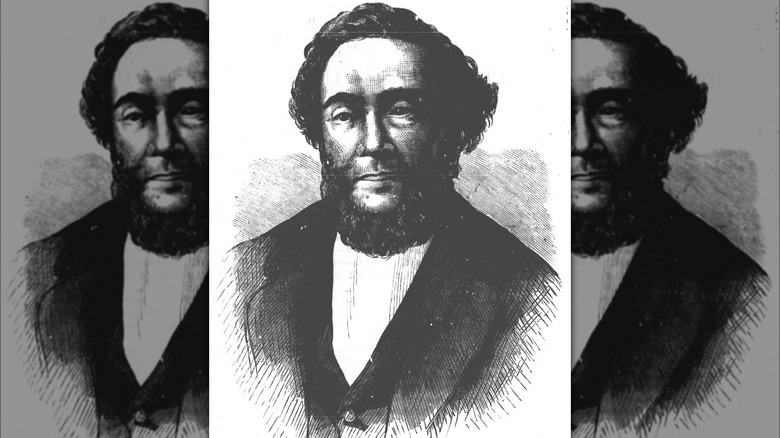Details Found In Serial Killer Edward H Rulloff's Autopsy
Since 1977, Edward Rulloff's has been slinging drinks and cooking up delicious food for denizens and visitors to Ithaca, New York. The eatery is in the heart of Collegetown, an easy walk for students and faculty of Cornell University, both of whom frequent this iconic establishment. Curiously, the namesake of this popular spot is a man who was mired in controversy throughout his life in the 19th century. Edward Rulloff was a man of many talents and accomplishments. The Ithaca Voice reports that he was a self-trained physician, an expert in the now-debunked medical theory of phrenology, a teacher, an inventor, and a notable philologist (one who studies the structure and relationship of languages). He was also a convicted embezzler, robber, burglar, wife-beater ... and murderer.
The duality of Rulloff has led him to be known in history as the "Learned Murderer" (per Rulloff's) and "The Genius Killer" (via Crime Library). The criminal part of his brain seemed to be in action early in his life, as he was sentenced to serve time in prison for embezzlement. But when he completed his time, he married a young woman and soon became a father (via the Ithaca Journal). Wedded bliss wouldn't last, and Rulloff was soon accused of murdering his spouse and child. As no bodies were discovered, he was only convicted of kidnapping and sentenced to prison for 10 years. After his release, he was convicted of murdering a store clerk and sentenced to death. One professor was so intrigued by Rulloff's genius that he was able to get the man's brain to study after he was hung.
What the autopsy yielded is astounding
After Edward Rulloff's body was cut from the rope that led him to his end, no family claimed it. The Ithaca Journal reports, "There was not one person to mourn the death of this lifelong criminal — not one to care if his dead body was decently buried." But one person was interested in the killer's body. More specifically, the brain. The Ithaca Voice tells of how Cornell professor Burt Wilder pounced on the opportunity to examine Rulloff's remains and perform an in-depth study on the head.
The Ithaca Journal notes many of the findings that Wilder published from Rulloff's autopsy. Rulloff's brain weighed in at 59 ounces, notably larger than average. A thorough study of the organ followed, with some interesting discoveries. Wilder revealed that the lower part of the brain, one he credits for "mechanical powers," was abnormally large. This was in contrast to his findings on Rulloff's upper brain, the part that serves as a person's moral base and sentimentality. This region was noted as "very deficient."
Wilder also examined the skull. Of that series of bones, he wrote that Rulloff's noggin was "probably the thickest ever known. In no place was it less than three-eights of an inch in thickness, and in most places, it was half an inch thick." He compared that thickness to the average, which was only one-quarter of an inch. Wilder described Rulloff's brain as having a "coat of mail" around it, giving it an incredible layer of protection.
Rulloff was the last person publicly hung in New York state
The Ithaca Journal tells of how the condemned Edward Rulloff walked to his doom as a convicted murderer. The man who, by all accounts, was a success in so many ways had a second life that drove him to commit crimes that ranged from petty to horrific acts of violence. The source gave an alternate take on the man that many look back on as being a troubled genius. Perhaps Rulloff was not the eccentric intellectual that some had painted him to be. Rather, he was a "man of vast pretense and over-weening vanity, who was a thief when a boy, who had spent 18 of his 51 years in prison, who was a bungler in crime, while a charlatan in learning." The only thing that was great about Rulloff was his level of "depravity." Nonetheless, his story piqued enough interest to get his brain studied, not to mention having an eatery named after him generations later.
The Ithaca Voice reports that Rulloff's hanging was the last publicly attended in New York. Before he swung from the gallows on May 18, 1871, he is said to have exclaimed, "Hurry it up! I want to be in hell in time for dinner." His brain was quickly removed and given to Burt Wilder, whose findings on the killer's organ still fascinate the public today. The brain of Rulloff is on display as part of the Wilder collection at Cornell University.


